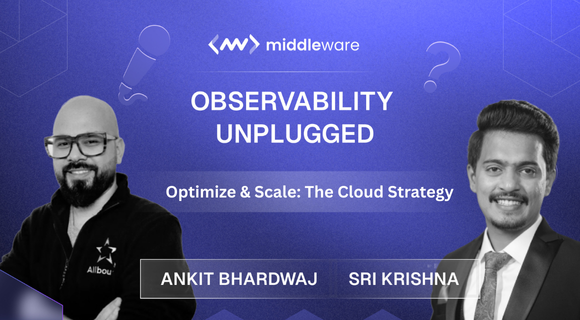Overview
Ankit Bhardwaj is a cloud architect leader known for driving significant cost savings and ensuring high-uptime, scalable applications through strategic modernization.
What We Talk About:
- Ankit’s tech evolution, from PL/SQL to cloud architecture leadership, showcases adaptable expertise.
- He champions observability for infrastructure resilience and cost optimization.
- Strategic cloud migrations and a pragmatic approach to modernization are his hallmarks.
- Driving significant cost savings and ensuring high uptime demonstrate his impactful leadership
Podcast Highlights
Data-Driven Optimization:
- Ankit heavily emphasized the use of APM (Application Performance Monitoring) telemetry and data analysis to understand system behavior.
- He used observability data to inform capacity planning, instance class adjustments, and load balancer configurations during the region merge.
- He highlighted that studying data closely helped him to make informed decisions about infrastructure changes, preventing premature switch-offs and minimizing risks.
Observability for Proactive Issue Detection:
- He stressed the importance of continuous monitoring and analysis of observability data to detect performance degradation or anomalies.
- This approach allowed him to react quickly to issues, such as increased P99 latency, and revert changes when necessary.
Observability in Security:
- He advocated for using observability tools, like those provided by Sysdig, to monitor container environments for security threats.
- He mentioned using observability to gather evidence for compliance audits, such as SOC2 and ISO 27001.
- The use of service meshes, which contain observability tools, to monitor inter-service traffic and detect anomalies.
CI/CD and Observability:
- He implemented a modern CI/CD pipeline with DORA metrics, which are key observability indicators for software delivery performance.
- This allowed them to ensure both stability and throughput during rapid releases.
Overall Observability Mindset:
- Ankit’s approach to optimization and migration was rooted in a strong observability mindset, focusing on understanding system behavior through data.
- He viewed observability as a continuous process, not an afterthought, and integrated it into all stages of development and operations.





